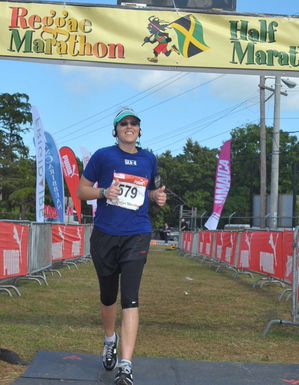Cardio training tips part 2: Going to the next level
As I mentioned in my last article, effective cardiovascular training is a crucial factor in for many fitness related goals including athletic goals, weight loss and general health. In this post, I’d like to share with you some of my secrets for developing cardio programs.

Photo from Action sports International
In order to get the most benefit from cardio training, I recommend making continual adjustments and tweaks to three variables:
• Duration: Length of time spent for each individual cardio session
• Intensity: Level of difficulty achieved during each cardio session
• Variance: Varying the type of cardio performed each session
Duration
Obviously the length of your cardio training sessions has an impact on total calories burned, cardiovascular endurance and cardiovascular health. While basic recommendations from the American College of Sports Medicine and American Heart Association are to do moderately intense cardio 30 minutes a day five days a week, or to do vigorously intense cardio 20 minutes a da, three days a week, for healthy adults under the age of 65, it’s also important that your cardio training correlates with your personal fitness goals, whether they involve weight control, fat loss or are more performance oriented.
Intensity:
High Intensity Interval Training (HIIT)
HIIT has become a very popular fat burning method. HIIT uses intervals of time and assigns them a personal intensity level. Normally you'll "max out" and then recover during the next interval. HIIT is great for breaking personal records and gives you a personal challenge during every workout. Not only that, research suggests that HIIT causes the body to burn more energy for a longer period of time after the workout is complete (fat burning while doing nothing!). The main drawback to HIIT is for beginners in fitness. This type of workout can be intimidating, and, if done incorrectly, it could be overly exhausting to the point of becoming nauseating. Whenever performing HIIT, it should always be based on personal intensity index. It is important to understand how hard you can work.
Steady State Training (SST)
SST is a constant, steady effort throughout the entire cardio session. You'll keep your personal intensity from 7 to 9 (on a scale of 1-10) the entire session. This type of cardio session will also cause the body to demand more energy when your workout is complete, although not as much as HIIT.
Low Intensity Cardio
Low intensity cardio is great for active lifestyle activities, beginners in fitness, those recovering from injury and the elderly. While you do burn mostly fat while doing cardio at a lower intensity level, you will not get the benefits of post-workout energy demand. Because of this, LILT is an inefficient method for burning fat. You can achieve more benefits in a shorter period of time by using the various other methods suggested here.
Variance
One commonly overlooked component of cardio training is variance. By variance I mean using different methods of cardio each time you train in order to elicit an adaptive response. Variance is especially important if your goals include weight loss, fat loss or general fitness. By using different types of cardio such as running, jump rope, step mill, biking, elliptical, etc., your body attempts to become efficient at each activity (as opposed to becoming efficient at just one activity). Continually changing type of cardio you do will not only improve overall fitness level but also will increase your total calories burned.
The method I’ve found to be most effective in getting cardio results is by laying out a weekly or monthly plan that incorporates each of the variables mentioned on different days. Are you wondering how you can use these principles to maximize the effectiveness of your cardio training plan? If so, leave your questions and I will do my best to answer them below.


Comments
AlphaAlpha
Mon, Jan 17, 2011 : 11:21 a.m.
Good article, Ms. Reynolds. Do you have any nutrition tips? Thank you.